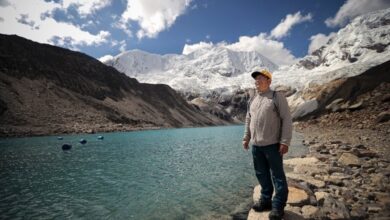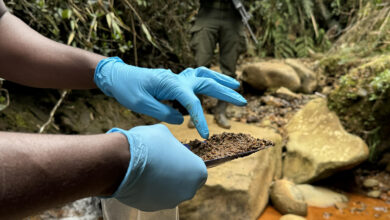Nicaragua’s Heat Wave Intensifies: Regional Climate Alert

Nicaragua faces relentless heat, with temperatures nearing 39°C in its western regions. This signals a persistent heatwave that mirrors broader climate challenges in Central America, where extreme weather events become increasingly common. It urges a reevaluation of regional climate strategies.
Nicaragua is grappling with an intense heatwave, with temperatures in the western departments of León and Chinandega nearing a scorching 39 degrees Celsius. The Nicaraguan Institute of Territorial Studies (Ineter) reported that this ongoing climatic phenomenon continues the extreme weather conditions that have afflicted the Central American nation over the past fortnight.
Forecasted Extreme Heat
The director of meteorology at Ineter, Marcio Baca, highlighted during a press briefing in Managua that the western zone of Nicaragua might experience temperatures up to 39 degrees Celsius. This extreme heat, forecasted for the coming week, is expected to sustain the heatwave across the Pacific northwest of Nicaragua, characterized by predominantly sunny and hot conditions.
The current temperatures are already pushing the limits, with León and Chinandega experiencing up to 39 degrees Celsius. Other areas, including Managua, the northern regions, and the rest of the country, are experiencing temperatures ranging from 35 to 38 degrees Celsius. In previous years, incidents of severe heatstroke, with feels-like temperatures soaring between 44 to 47 degrees Celsius, have been reported in areas like Somotillo, Villanueva, Malpaisillo, Larreynaga, and Mina El Limón.
According to the World Bank’s Climate Change Knowledge Portal, Nicaragua, known for its tropical climate and minimal seasonal variation, is the hottest country in Latin America. It boasts an average temperature of 27.97 degrees Celsius, the highest in the region. The dry season, stretching from November to April is particularly sweltering in León and Chinandega. Historical data indicate that the maximum temperature in these provinces over the last five years has fluctuated between 36 to 38 degrees Celsius in León and 38 to 42 degrees Celsius in Chinandega.
Part of a Broader Climatic Trend
This persistent heatwave in Nicaragua is not an isolated incident but part of a broader climatic trend affecting Central America. The region, characterized by its diverse ecosystems ranging from rainforests to coral reefs, is increasingly vulnerable to extreme weather events, including prolonged heatwaves, erratic rainfall patterns, and hurricanes.
The rising temperatures in Nicaragua and the broader Central American region underscore the urgent need for comprehensive climate strategies that address the immediate impacts of extreme weather while also tackling the longer-term challenges posed by climate change. These strategies should encompass a range of measures, from improving meteorological data collection and forecasting to implementing sustainable land use practices and enhancing disaster preparedness and response capabilities.
Moreover, the situation in Nicaragua serves as a call to action for regional cooperation in addressing climate change. Central American countries sharing similar environmental challenges and climatic conditions can benefit from collaborative efforts in research, resource sharing, and policy-making to mitigate the impacts of climate change and enhance regional climate resilience.
Also read: Nicaragua’s Coffee Culture: Brewing Sustainability and Quality
The ongoing heatwave in Nicaragua is a stark reminder of Central America’s escalating climate challenges. As temperatures soar, the imperative for robust, coordinated, and proactive climate action becomes increasingly apparent. Addressing these challenges requires national commitment, regional solidarity, and international support, underscoring the interconnected nature of climate change and the collective effort needed to combat its far-reaching impacts.





